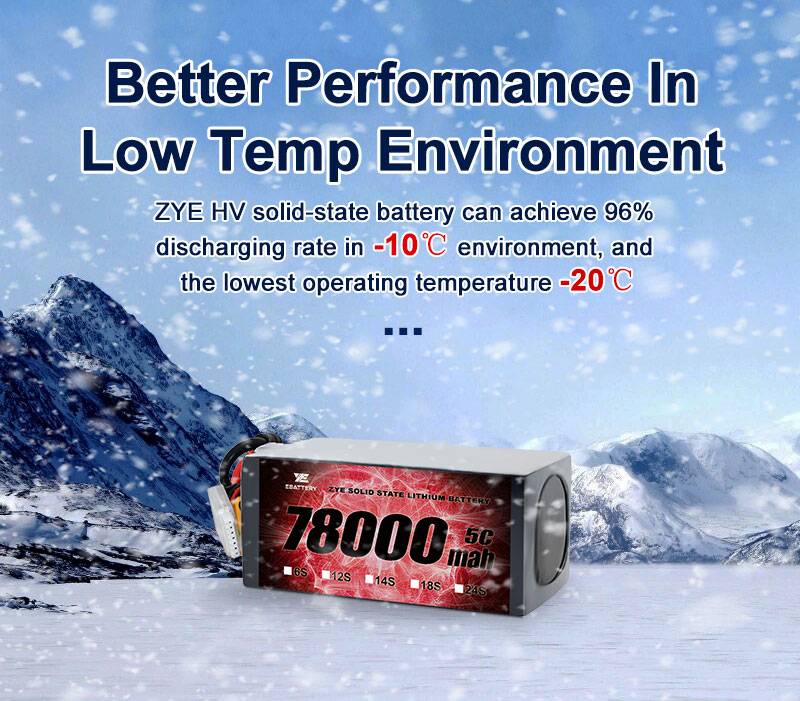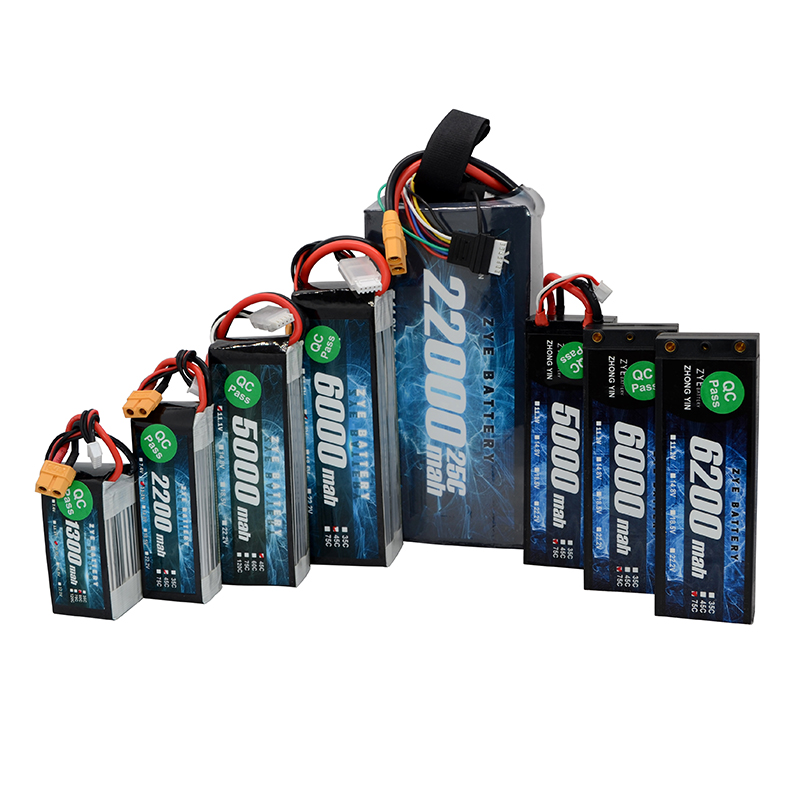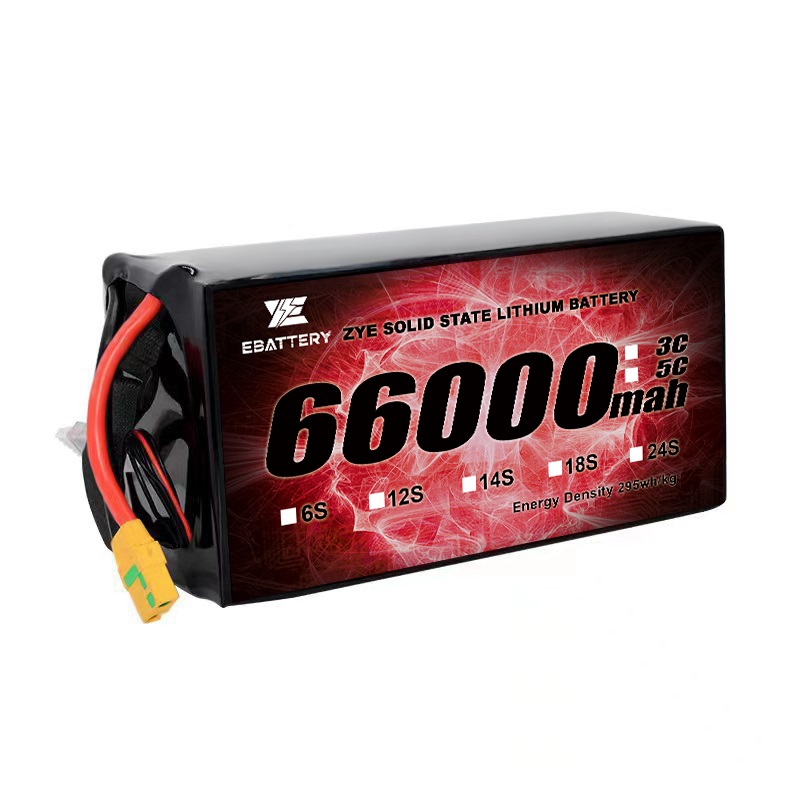How is the safety and recycling of solid state batteries?
The world of battery technology is rapidly evolving, and hv-solid-state-battery is at the forefront of this revolution. The question of battery recycling becomes increasingly important. Solid state batteries, heralded as the next generation of energy storage technology, are no exception to this scrutiny.
In this article, we'll explore the recyclability of solid state batteries stocks, their applications in drones, and the future outlook for this innovative technology.

Conductive materials in Solid State Batteries
The key to understanding the charging capabilities of solid state batteries lies in their unique composition. Unlike traditional lithium-ion batteries that use liquid electrolytes, solid state batteries employ solid conductive materials to facilitate ion movement.
Let's explore some of the most promising conductive materials used in 66000mah-hv-solid-state-battery:
1. Ceramic Electrolytes: Ceramic materials such as LLZO (Li7La3Zr2O12) and LAGP (Li1.5Al0.5Ge1.5(PO4)3) are being investigated for their high ionic conductivity and stability. These ceramics offer excellent thermal and chemical stability, making them suitable for high-performance solid state batteries.
2. Polymer Electrolytes: Some solid state batteries use polymer-based electrolytes, which offer flexibility and ease of manufacturing. These materials, such as PEO (polyethylene oxide), can be combined with ceramic fillers to enhance their ionic conductivity.
3. Sulfide-based Electrolytes: Materials like Li10GeP2S12 (LGPS) have shown promising results in terms of ionic conductivity. However, their sensitivity to moisture and air presents challenges for large-scale production.
4. Glass-ceramic Electrolytes: These hybrid materials combine the benefits of both glasses and ceramics, offering high ionic conductivity and good mechanical properties. Examples include Li2S-P2S5 and Li2S-SiS2 systems.
5. Composite Electrolytes: Researchers are exploring combinations of different solid electrolyte materials to create composites that leverage the strengths of each component. These hybrid approaches aim to optimize ionic conductivity, mechanical stability, and interfacial properties.
The choice of conductive material plays a crucial role in determining the charging speed and overall performance of solid state batteries stock. As research in this field progresses, we can expect to see further improvements in the ionic conductivity and stability of these materials, potentially leading to even faster charging times.
Safety Considerations: While lithium-ion batteries often require careful thermal management during fast charging to prevent overheating, solid state batteries stock may be able to charge more rapidly without the same level of safety concerns. This could potentially allow for higher power charging stations and reduced charging times.

Recycling Challenges of Solid State Batteriesz:
Recycling solid state batteries presents unique challenges compared to traditional lithium-ion batteries. The solid state battery architecture, while offering advantages in terms of energy density and safety, introduces complexities in the recycling process.
Despite these challenges, researchers and industry professionals are actively working on developing effective recycling methods for solid state batteries. Some promising approaches include:
1. Mechanical separation techniques to break down the battery components
2. Chemical processes to dissolve and recover specific materials
3. High-temperature methods to separate metals and other valuable components
As the technology matures and becomes more widespread, it's likely that dedicated recycling processes will be developed to address the unique characteristics of hv-solid-state-battery.

Future of Solid State Batteries in Recycling and Sustainability
Safety is another crucial advantage of solid state batteries in drone applications. The absence of liquid electrolytes eliminates the risk of leakage and reduces the potential for thermal runaway, which can lead to fires or explosions. This enhanced safety profile is particularly valuable in commercial and industrial drone operations where reliability and risk mitigation are paramount.
Researchers are exploring various approaches to improve the recyclability of solid state batteries stock. Some of these strategies include:
1. Designing batteries with recycling in mind, using materials and construction methods that facilitate easier disassembly and material recovery
2. Developing new recycling technologies specifically tailored to the unique properties of solid state batteries
3. Investigating the potential for direct recycling, where battery materials are recovered and reused with minimal processing
4. Exploring the use of more environmentally friendly and abundant materials in solid state battery production
The sustainability aspect of solid state batteries extends beyond just recycling. The production of these batteries could potentially have a lower environmental impact compared to conventional lithium-ion batteries. Furthermore, the improved energy density and longer lifespan of hv-solid-state-battery could contribute to sustainability in various applications.
In conclusion, while solid state batteries present unique recycling challenges, their potential benefits in terms of performance, safety, and sustainability make them a compelling technology for the future.
If you're interested in learning more about solid state batteries and their applications in drones or other technologies. Contact us at coco@zyepower.com for more information on our products and services.
References
1. Johnson, A. K., & Smith, B. L. (2022). Advances in Solid State Battery Recycling Techniques. Journal of Sustainable Energy Storage, 15(3), 245-260.
2. Chen, X., & Wang, Y. (2023). Solid State Batteries in Drone Applications: A Comprehensive Review. International Journal of Unmanned Systems Engineering, 8(2), 112-130.
3. Rodriguez, M., & Thompson, D. (2021). The Future of Sustainable Energy Storage: Solid State Batteries. Renewable and Sustainable Energy Reviews, 95, 78-92.
4. Park, S., & Lee, J. (2023). Challenges and Opportunities in Recycling Solid State Batteries. Waste Management & Research, 41(5), 612-625.
5. Wilson, E. R., & Brown, T. H. (2022). Environmental Impact Assessment of Solid State Battery Production and Recycling. Journal of Cleaner Production, 330, 129-145.
























































